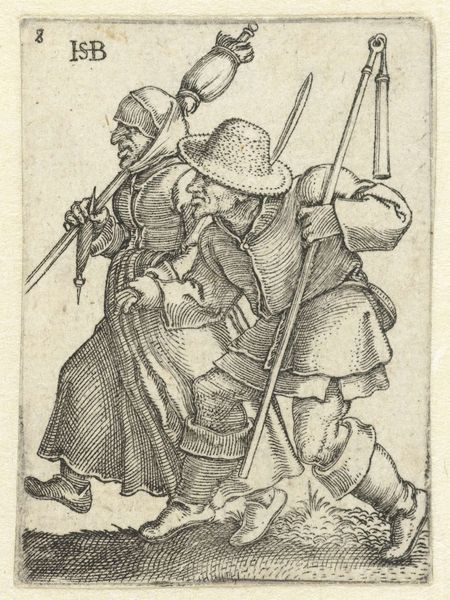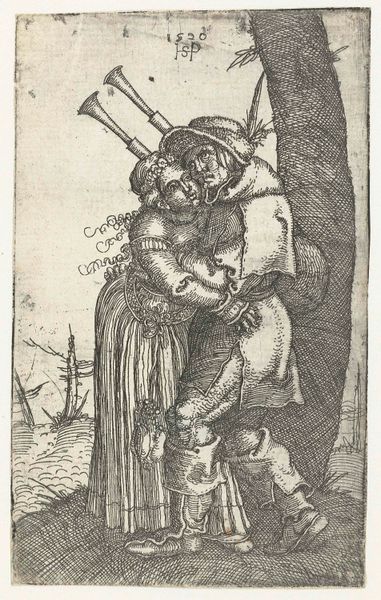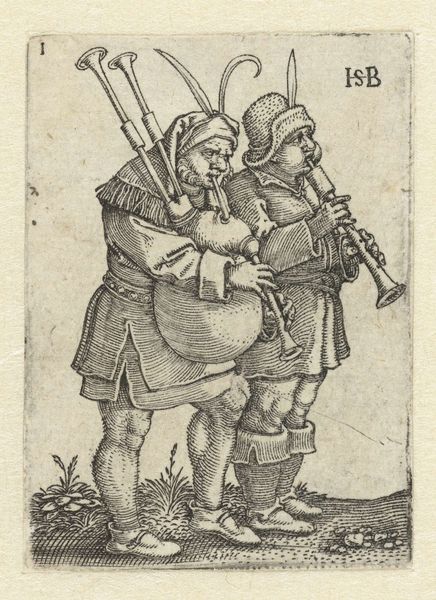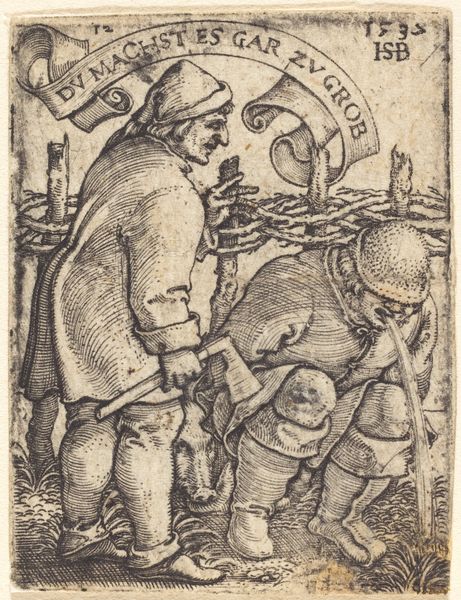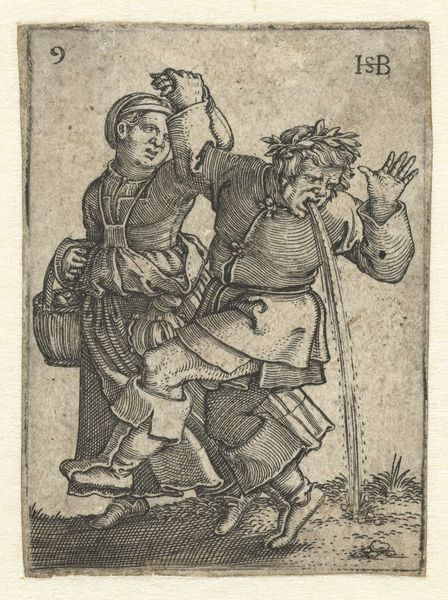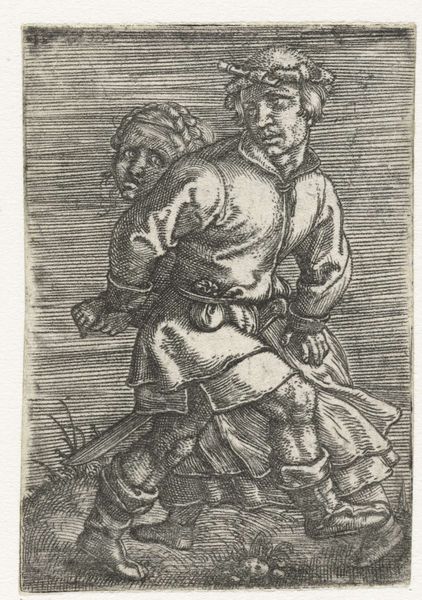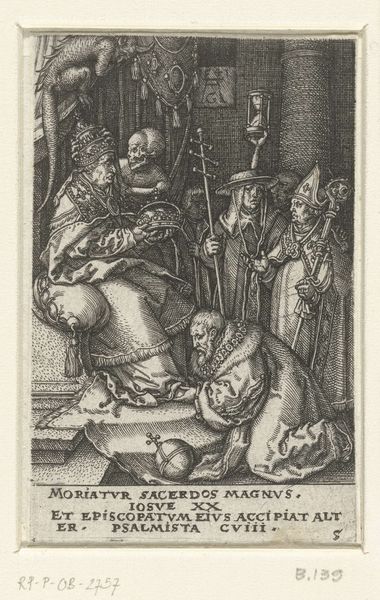
print, engraving
#
mechanical pen drawing
# print
#
pen illustration
#
pen sketch
#
old engraving style
#
landscape
#
cartoon sketch
#
figuration
#
personal sketchbook
#
pen-ink sketch
#
pen work
#
sketchbook drawing
#
genre-painting
#
northern-renaissance
#
sketchbook art
#
engraving
Dimensions: height 47 mm, width 35 mm
Copyright: Rijks Museum: Open Domain
Editor: Here we have Sebald Beham’s "Dancing Peasants," an engraving from 1537 currently held at the Rijksmuseum. It’s a very…intricate piece, almost feels a bit unsettling. The figures seem so deliberately exaggerated. What visual elements stand out to you? Curator: Immediately, it’s the rigorous application of line and texture, and how these elements articulate form. Observe the artist's deliberate cross-hatching which defines the subjects’ bulky figures, clothing, and even creates the illusion of depth and shadow, adding to the sense of weight and movement. Are you taking in the consistent stroke work throughout the composition? Editor: I do see the repeated lines now that you point that out. It’s very uniform, like a machine made it! Why is there so much emphasis on the pattern of those strokes? Curator: Precisely! Consider how Beham controls your eye through pattern density and directional shift, emphasizing the muscular build and crude energy of the figures while establishing form within the depicted costumes. In focusing attention to these attributes, this gives more emotion to the illustration than had these artistic decisions been omitted. The pattern itself contributes to our engagement with the subject. How would the interpretation shift were that abandoned in favor of flatter shapes, perhaps? Editor: So it’s about more than just depicting what’s there; it's about enhancing the narrative through careful control of form and medium. Curator: Exactly. The power resides in Beham's articulation through controlled variations within the print’s rigorous compositional framework, elevating the emotional valence. Editor: That's a perspective I hadn’t considered! I was too caught up in the strangeness of it all. Curator: Focusing on the building blocks and understanding why they are used helps guide us to interpretations.
Comments
No comments
Be the first to comment and join the conversation on the ultimate creative platform.
